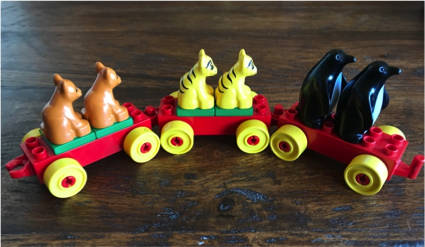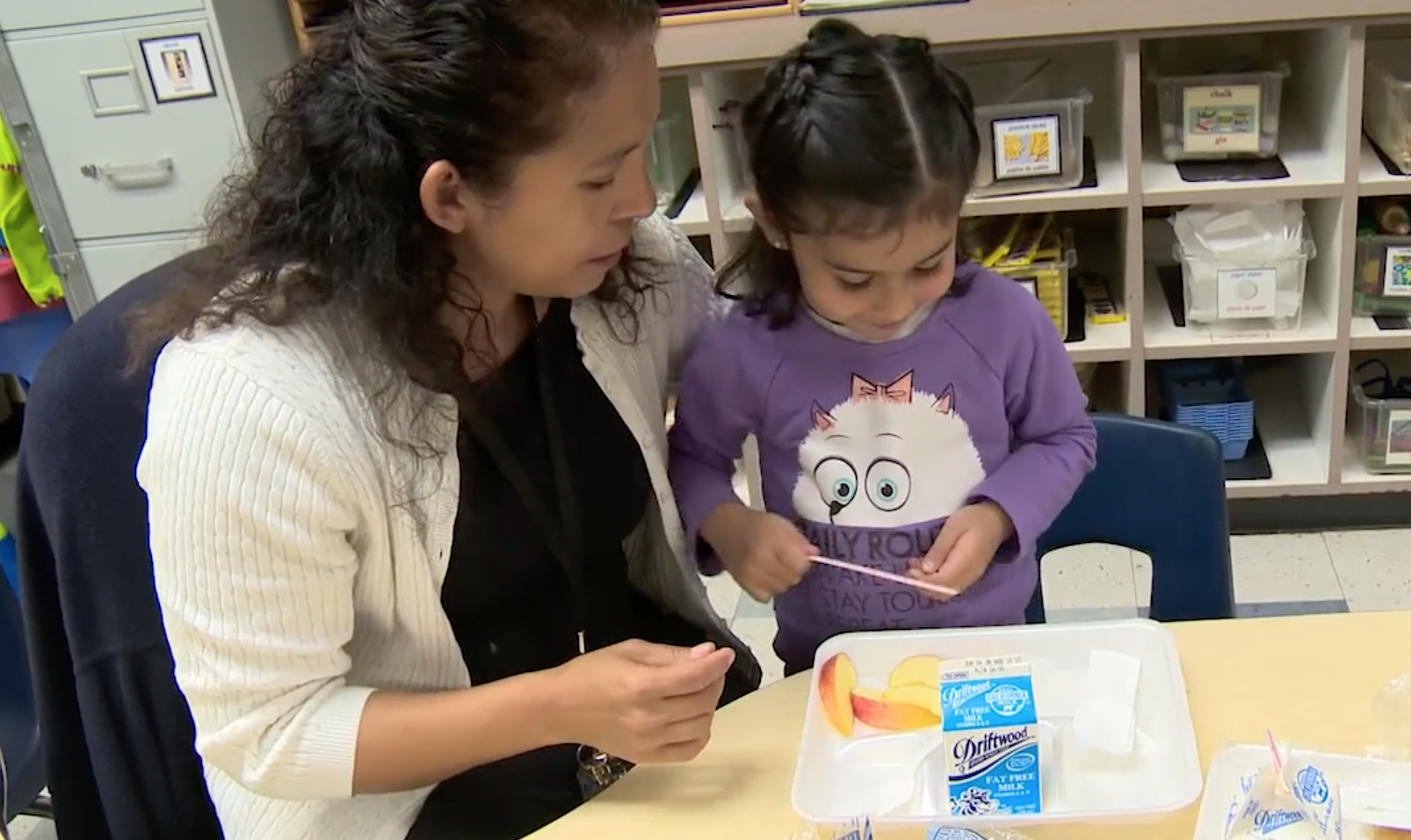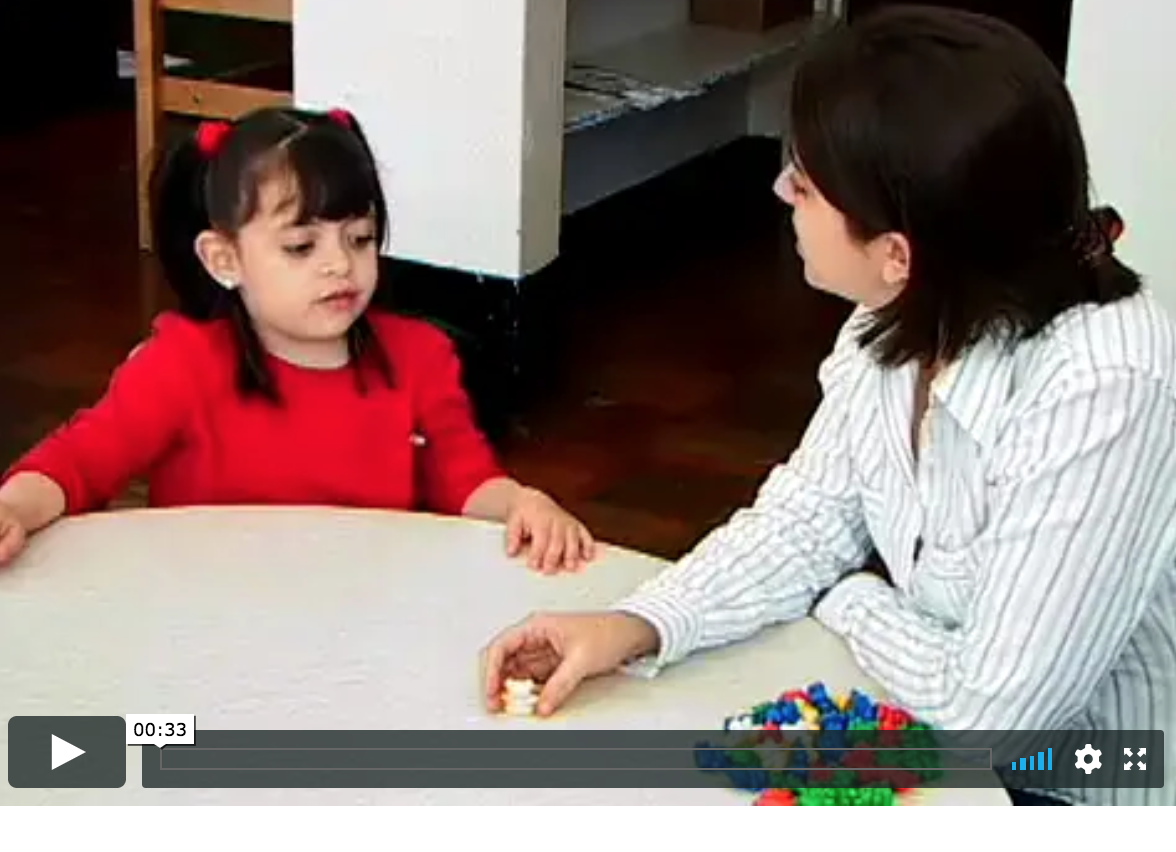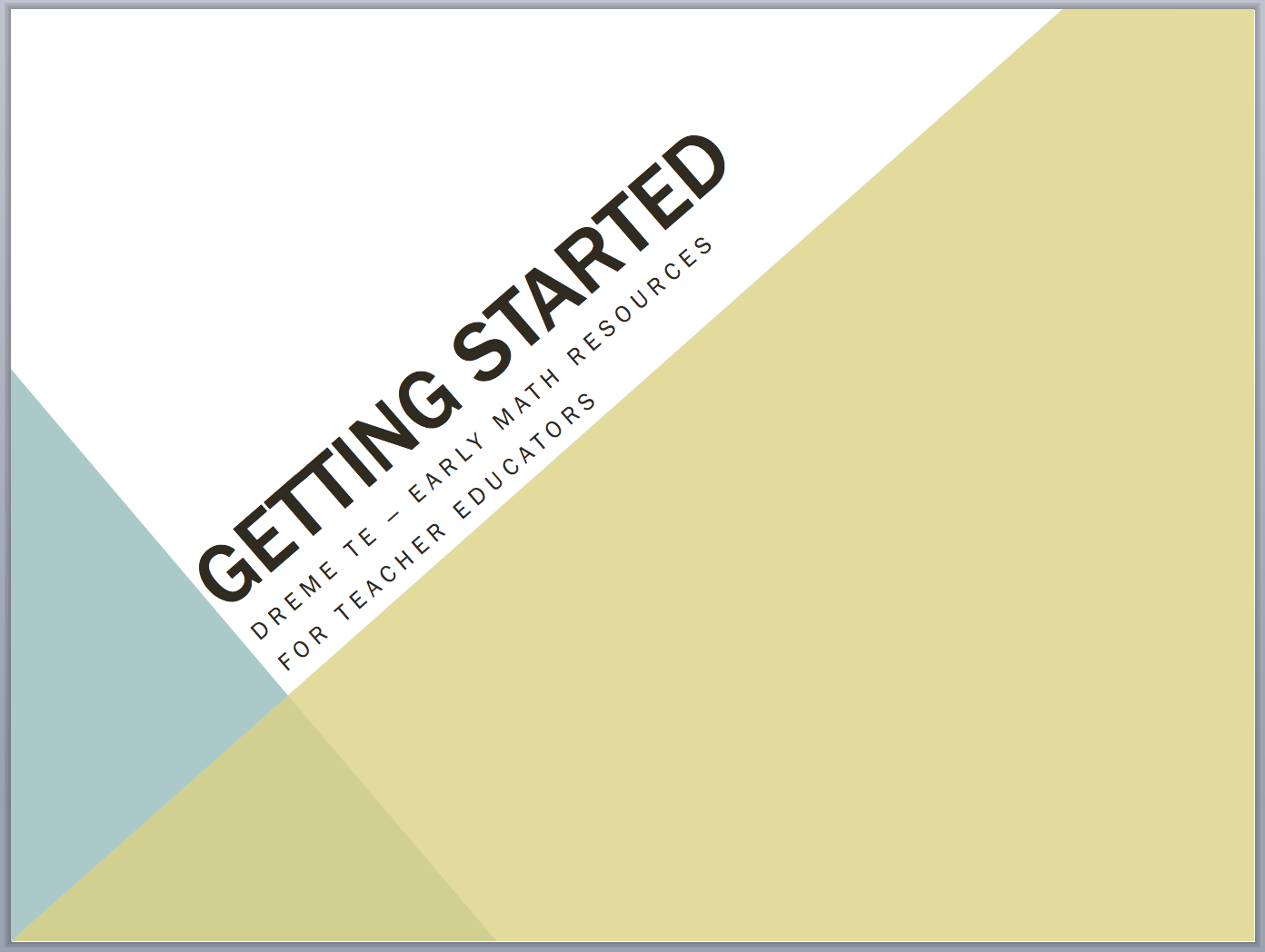Multiplication and division are often considered to be too mathematically complex for young children. However, we see that young children engage in multiplicative reasoning as they play and that their early engagement in grouping provides a foundation for operations.
Three-year-old Sonja was sitting on the floor with a variety of small Duplo animals on her lap. Teacher Jodi came over and sat next to her. “What do you have?” Sonja didn’t answer, but handed her a tiger. Teacher Jodi responded, “Wow, it has so many stripes!” Sonja nodded and smiled and began to split the set of animals equally between them by alternately adding an animal onto each pile, one in front of Teacher Jodi, then one in front of her. When she finished, she smiled broadly and pointed to her pile and said, “Mine!”
Later that day, Teacher Jodi stopped in to see what Sonja was up to at the Duplo table. Sonja had created a train with three cars and atop each car were two animals.
 Sonja looked up and said, “Look at my zoo!” Teacher Jodi replied, “You’ve got the same number of animals on each car! How many do you have on this car?” [pointing to one of the cars]. Sonja replied, “Friends! One and one, one and one, one and one!” Sonja pointed at each member of the three sets of two animals. “They friends!”
Sonja looked up and said, “Look at my zoo!” Teacher Jodi replied, “You’ve got the same number of animals on each car! How many do you have on this car?” [pointing to one of the cars]. Sonja replied, “Friends! One and one, one and one, one and one!” Sonja pointed at each member of the three sets of two animals. “They friends!”
Simple child’s play? Yes… and no. Child’s play, certainly! Simple, no. In sharing her set of zoo animals and creating two equal sets, Sonja was engaging in a common childhood operations-based activity: sharing fairly. We call this fair-sharing and it displays the foundations of division—children’s ability to divide up a set into equal smaller sets. Children may even be able to cope with leftovers by taking turns with the odd (in this case) animal out.
In allocating two animals to each train car, Sonja was engaging in multiplicative operations. Apparently, each of the three train cars needs to have two friends. In this case, she isn’t dividing up a whole set of animals, but rather making happy pairs on the train. The cars could have held a smaller or a greater number of animals, but Sonja had determined that each train car needed two animals. She was engaging in the operation of multiplication.
We often think that introducing the operations of multiplication and division should be left until second or third grade. However, in watching young preschool children it is evident that they are already using multiplication- and division-based thinking to solve problems at home and in the classroom. Young children are building a foundation in operations when they put objects in groups. Teachers can support early multiplication and division by asking questions such as “I see that you have three tigers and three penguins, how many do you have all together?” and providing opportunities where children can use grouping to solve problems: “Sonja, would you put four sets of markers at each table?”



